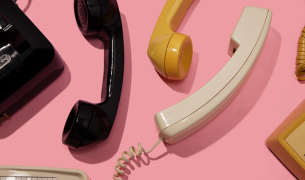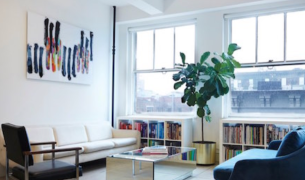This website uses cookies, by continuing to use this website you consent to the use of cookies.
Artist Feature: Shanita Sims
For the second installment of our Artist Feature series, we spoke with Shanita Sims, a freelance photographer based in NYC. Shanita’s work captures the authenticity of her subjects and her personal calling to protect and highlight the image of Black women. Her work portrays her admiration of these women and at the same time represents how proud she is to be a Black woman herself.
In a call to action to the creative industry, Shanita points out a shift she would like to see in the projects awarded to Black artists. The work awarded to Black artists is often to represent Black culture, yet the skillset and perspective of Black artists can be applied to work across a far wider set of subjects. Shanita challenges the industry to understand how the work of Black artists can be expanded across all subject matters, spaces and aesthetics.
Our questions & her responses below:
Your work has an observational quality to it and captures authentic moments. Are there themes that guide the way you see the world and what you decide to photograph?
I would say that my work is guided by romanticism, femininity and nostalgia. I am a dreamer. When I find something or someone that I decide to photograph, I think I am trying to capture tangibly what I am feeling inside. I really open my senses and seek to cradle the imagery I am trying to share. I want viewers of my work to feel something when they look at a photograph I’ve made. I want you to feel transported.
In reference to your question, my approach is also acutely aimed toward authenticity; to be authentic. I’d say it’s an extension of my personal ethos where I hold honesty in high regard. So, when I make a photo or capture a street moment, the goal is to create from the soul so that the work isn’t contrived or forced. I think that is the piece of the puzzle that resonates with everyone. The connective tissue. It’s the relatability: human qualities that pique our interests and our fascination for another’s idiosyncrasies and what not. I often challenge myself, questioning my rationale for some of the photos I make or consider making. Why are you taking this photo? What does it mean to you? Is it you or is it influenced by trends?; these are all the usual suspects. Most often though, I choose to go with my heart. If I feel that little ping in my chest, then it’s real. That’s coming from me.
Can you talk a bit about why photography is an important medium for you? Are there ways that the medium is integral to your work?
Quite simply, it’s important because it’s something that I love. It’s been a way to connect with people, freeze-frame the little moments of my day, and capture memories. I like to think of photography as speaking with your eyes. The eyes, the window to your soul, right? You can see a lot by what someone is showing you with their eyes. I think photography is the manifestation of that. What I am showing you (in a photograph) from my eyes. I like that I can be voyeuristic and absorb a scene: observe the energy of the people, the light of day…On the other hand, having an intimate portrait session has a different type of energy and observation. These elements are what encourage the making of a photograph. I couldn’t imagine a more authentic niche to express myself freely and creatively. I have the opportunity to inject parts of myself into my work directly and indirectly. My work is heavily nuanced. Those nuances range from subtle gestures to abbreviated frames of a scene to suggest something deeper. I get to choose those things, but I am also responsible for relaying those subtleties into a comprehensive and cohesive body of work. It’s this discipline that differentiates taking photographs for fun from being an artist of the medium, whatever your point of view.
Has your experience as a Black female living in NYC had an effect on your approach to photography? Either conceptually or thematically?
I wouldn’t say that my experience as a Black woman in New York City has had any particular effect on my approach, but I will say that my experience as a Black woman in America especially has. There are so many stigmas that one has to circumvent as a Black woman in this society that I always work to highlight and encourage positive, feminine, honest, and endearing personas. I have a particular woman in mind when I choose subjects to photograph in portrait sessions or when I am creating conceptual imagery. She’s all the things that I find beautiful about Black women. Our skin, our hair, our aura…It’s important for me to capture and share these attributes with the stories I am telling. I feel as though I have to protect the image of a Black woman. Her sensuality, her softness, her glory, her joy, her humanity…for as much as things are related to “her”, they are related to me because we are one in the same. It’s something that I enjoy nurturing the most in my photography.
Who are artists that have inspired you?
Koto Bolofo, Santu Mofokeng, James Barnor, Carrie Mae Weems, Gordon Parks, Saul Leiter, Roy DeCarava, Joel Meyerowitz, Olivier Kervern, Andrew Dosunmu, Kishin Shinoyama. I’m sure I am missing a few. Might I also add Michaela Coel, albeit not an artist in my medium per se, but the woman is brilliant. Would love the opportunity to experience her genius in person.
At The Charles, we are actively looking for ways to integrate Black artists among our group of vendors, and their work in our pitches. Are there ways that you would like to see brands and agencies like ours work towards equality in the creative industry?
I think one should always be on the lookout for emerging talent and to be conscious of whom you’re working with. What types of people do you consistently hire or promote? On the flip side, what types of people aren’t you consistently hiring? Challenge yourself as to why you haven’t employed this particular group of people. Diversity and integration should be fulfilled with purpose, where you’re actively seeking out artists of different cultures as a continuum, so that it becomes second nature and not something that eventually reverts back to the comfort and confines of what you’re “used to”. I find tons of Black artists all the time from just paying attention when I am immersed in visual imagery.
I also think about topics about particular cultures that I want to explore, African/African-American in particular but not exclusive to such. In an industry where interests fluctuate rapidly and relevance is ever fleeting, it’s hard to imagine that agencies and brands wouldn’t come across more Black artists naturally. I’ve known about and admired the work of Nadine Ijewere and Campbell Addy for what seems like ages now, from my Tumblr days even. I am only just now starting to see them receive opportunities and accolades in the past couple of years. Their work was solid back then, it’s extraordinary now. And yet, they still have to field off commission requests withholding compensation and the gamut of microaggressions to maintain any sort of relevance to mass media.
Additionally, I believe brands/agencies should be cognizant of their actions when attempting the inclusion of Black artists and other artists of color. Black artists can photograph and create stories that are an extension of Black culture just as much as they can photograph and create stories that are an extension of life. We are not limited to one particular subject, place, or aesthetic. There is a wide range of interests we are exploring that inform our work. Having the flexibility to perform and create in this range is something that I, as an artist, am seeking to accomplish and I am most certain my fellow contemporaries seek to accomplish the same.
Shanita Sims
Help us continue the conversation.
Email us here about other Black artists to help us share their experiences, and do the work that needs to be done in our industry.



